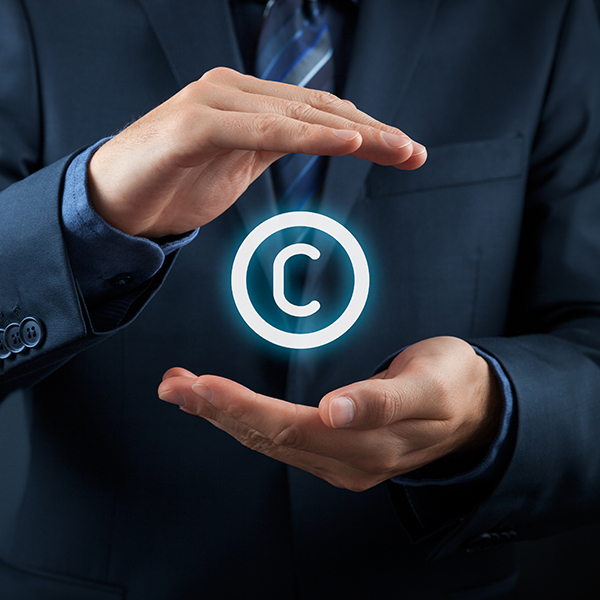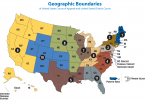
There are few issues more controversial, divisive, and misunderstood at the moment than the scope of the fair use doctrine as a defense to copyright infringement. Let’s take a look at exactly what “fair use” means, and under what circumstances using someone else’s material constitutes fair use.
The defense to copyright infringement known as fair use allows the public to use not only facts and ideas contained in someone else’s copyrighted work, but also the expression itself in certain circumstances. Codified at 17 U.S.C.S. § 107, fair use provides that the use of a copyrighted work, including such use by reproduction in copies, for certain limited purposes such as criticism, comment, news reporting, teaching (including multiple copies for classroom use), scholarship, or research, is not an infringement of copyright.
To determine whether use of a copyrighted work falls under fair use, courts look at the facts of each case individually, and apply an “equitable rule of reason” analysis, guided by four statutorily prescribed factors. These factors are:
(1) The purpose and character of the use, including whether such use is of a commercial nature or is for nonprofit educational purposes. The “purpose and character analysis” focuses on whether the new work merely supersedes the original work, or if it adds something new with a further purpose or different character, which alters the first with new expression, meaning, or message, which is more likely to be protected by fair use;
(2) The nature of the copyrighted work, which is primarily intended to distinguish works of fiction and other creative works from factual material, as use is less likely to be deemed fair use when the copyrighted work is a creative product and not a factual work;
(3) The amount and substantiality of the portion used in relation to the copyrighted work as a whole, as well as whether the amount of material used was reasonable in relation to the purpose of the copying; and
(4) The effect of the use upon the potential market for or value of the copyrighted work, including whether unrestricted and widespread conduct of the sort engaged in would have a substantially adverse impact on the potential market for the original or derivative works. Interestingly, courts have held that if such use lowered the public’s estimation of the original (such as a devastating review of a book that quotes liberally from the original to show how silly and poorly written it is), the transformative use will be found to be a fair use, notwithstanding the harm. If, on the other hand, the secondary use, by copying the first, offers itself as a market substitute and in that fashion harms the market value of the original, this factor would argue strongly against a finding of fair use.
Courts are also not limited by these four factors, and also afford considerable latitude for scholarship, comment, and even parody.
Let’s break this down a bit by the most common fair use claims, with some examples.
Use by Non-Profits
Contrary to popular belief, non-profit organizations enjoy no special immunity from determinations of copyright infringement. The question of whether the non-profit’s use qualifies as fair use revolves around the purpose and character of the use, not who the alleged infringer is.
In Penguin Books U.S.A., Inc. v. New Christian Church of Full Endeavor, Ltd., 2000 U.S. Dist. LEXIS 10394 (S.D.N.Y. July 21, 2000), the defendant, a non-profit religious organization, copied and distributed for free materials containing verbatim quotes from plaintiff’s copyrighted book. Plaintiff sued, and the Defendants claimed their use of the material was non-commercial and non-profit and for religious educational purposes only, and as such, they were exempt from copyright laws under the fair use doctrine.
The court disagreed. It held that the fact that defendants are non-profits that give away all allegedly infringing materials without charge does not mean that their verbatim use of material from plaintiff’s book is in any way “transformative.” The copied material was not used by Defendants as “raw material” for inspiration or ancillary use, but as a finished product. Almost no commentary or analysis accompanied the copied material, and the mere rearrangement of sections of the Text in Defendants’ printed pamphlets was found to be insufficient to transform the material, and thereby constituted fair use.
Use in Art
In Rogers v. Koons, 751 F. Supp. 474 (S.D.N.Y. 1990), the plaintiff, a photographer, discovered that one of his photographs was used as the basis for a sculpture which was displayed in a local art gallery. His photo depicting a group of puppies was used as the basis of the defendant’s sculpture, and almost-identical version of the photo in sculpture form. He sued both the sculpturist and the gallery.The court found thatthe sculpture infringed plaintiff’s photograph, as Plaintiff’s arrangement of his subjects and his photographer’s art constituted protectable expression, and reproduction of the photograph into sculpture form did not preclude a finding of infringement. The court applied the four factors determining fair use as discussed above, and found that the sculptor’s use of plaintiff’s photograph was merely a derivative work constituting commercial use. The court held that “…notwithstanding its unquestioned status as a work of art, the sculpture is not unsullied by considerations of commerce. [The defendant] actively markets his sculptures, by displaying them at galleries and through published advertisements, and they bring considerable sums from the public, as the sale of [this] sculpture indicates.” Since the artist’s work was merely a derivative of the original, the sculptor was found to have infringed the photographer’s copyright.
In contrast, see Blanch v. Koons, 467 F.3d 244 (2d Cir. N.Y. 2006).A photographer sued a visual artist who incorporated his photo of a pair of legs into a collage painting. The court held that the visual artist was not liable for copyright infringement, since his incorporation of the photograph in a collage painting constituted fair use. The court found that the artist’s use of the photograph was intended to be transformative, because the exhibition of the painting could not fairly be described as commercial exploitation (since he could not sell it, and did not make money off of it), and because the artist used the photo in a transformative manner to comment on its social meaning rather than to exploit its creative virtues. The court found the amount and substantiality of the portion used to be reasonable for its purpose. The court also found that the artist’s use of the photograph did not cause harm to the potential market for or value of the copyrighted work. As such, the artist was not liable for copyright infringement.
Use in News Reporting
Just because copyrighted material is used in a news broadcast or in a newspaper does not mean it qualifies as fair use. If the purpose of the use is to entertain, rather than inform, or if equally informative non-infringing alternatives are available, then use of the copyrighted material will most likely constitute infringement.
Conclusion
Courts have rejected the notion that the commercial nature of the use or the status of the infringer can by itself be a dispositive consideration. Instead, the totality of the circumstances must be weighed in determining whether a fair use defense exists in cases of copyright infringement.
The lessons learned from recent case law can be summarized as this. If you merely copy someone else’s work for the sake of “art” and make money off of it, it will likely be considered commercial use. You can’t just blatantly copy someone else’s material for your own commercial use, even if you put it in a different form or medium and call it art. If it doesn’t add a further purpose or different character; if it doesn’t amount to a new expression, meaning, message, commentary, or parody of the original work, it’s probably infringement.
Questions? Leave a comment below.







